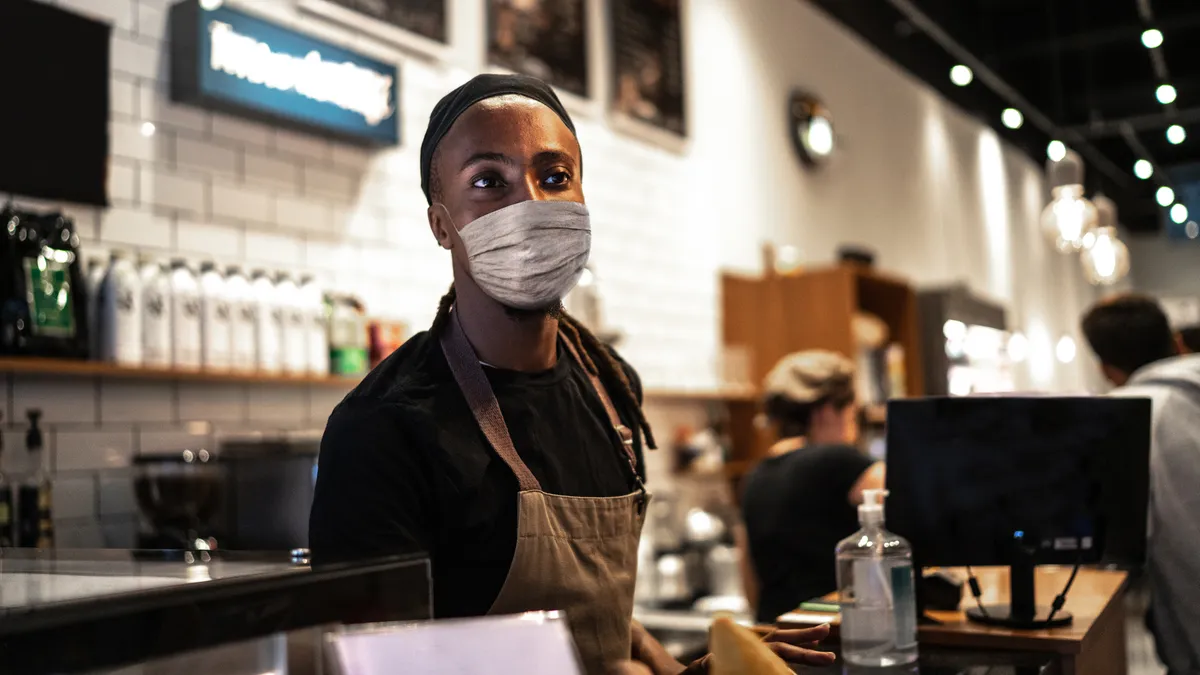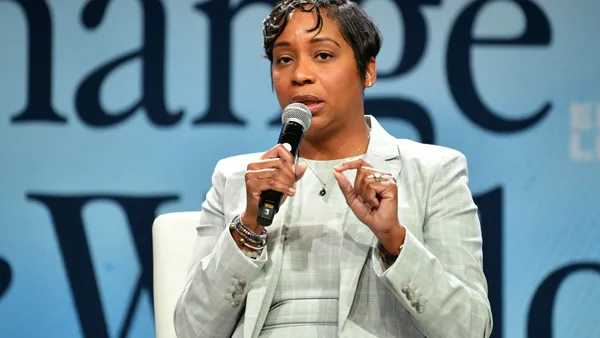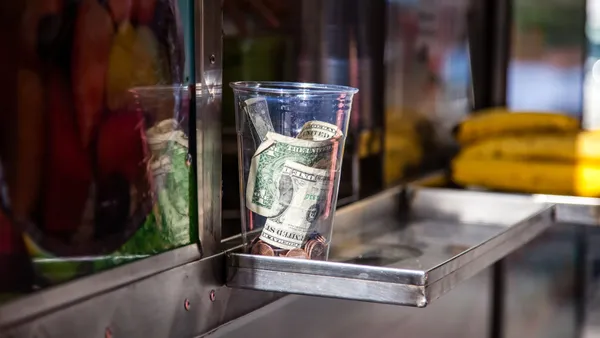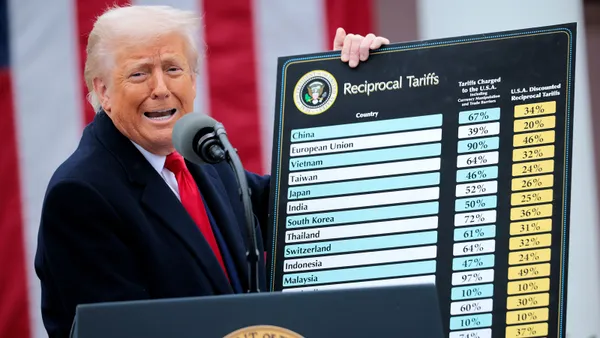Dive Brief:
- As of this week, California is allowing 19 counties to resume limited dining-room service. This plan does not include the Los Angeles market, but San Diego and Napa Valley are included. San Francisco restaurants are allowed to reopen at 25% capacity, according to Restaurant Business.
- Also, beginning Sept. 4, restaurants in New Jersey are allowed to reopen for dine-in for the first time since mid-March. Indoor dining may resume at 25% capacity. The state initially planned to reopen restaurants in July but set a new target date when Gov. Phil Murphy expressed concern over crowded areas and patrons not wearing masks.
- Meanwhile, New York City Mayor Bill De Blasio has promised a definitive answer for the city's restaurant reopening status this month, stating in a press conference this week, "If there can be a timeline … we need to decide that in the next few weeks and announce it, whether it's good news or bad news. ... We owe the industry as clear an answer as humanly possible soon, but it's always going to be about health and safety first."
Dive Insight:
Restaurants, especially in California and New York, represent key economic pillars. California had more than 76,000 restaurants as of 2018, and New York City had the most restaurants, coffee shops and specialty food stores per capita prior to the pandemic. New Jersey had about 20,000 as of March.
Restaurant operators are getting restless about states' patchwork plans, as evidenced by a lawsuit brought forward this week by hundreds of New York City restaurants against New York state asking for the right to reopen. An attorney for the restaurants told CBS New York that "there is no basis in science to say that a restaurant in Little Neck is more dangerous than a restaurant in Great Neck. The New York City infection rate has been under 1% now for over two weeks. In fact it's lower now than the suburban areas that surround New York City."
This restlessness is compounded by Executive Director of NYC Hospitality Andrew Rigie's prediction in August that thousands of restaurant could close over the next six to 18 months. Indeed, a recent report from the NYC Hospitality Alliance found that 83% of businesses could not pay full rent in July, while 37% reported paying no rent at all.
The New York lawsuit also underscores the general challenges involved with reopening plans happening all over the country. California's updated plan allows customers to dine in for the first time since July 13, but it doesn't include the entire state as coronavirus positivity rates remain disparate, for example. New thresholds have been put into place for areas still closed, and those thresholds must be met for three straight weeks.
As more restaurants close and rent comes due again, trade organizations have pushed for dining room reopenings as a Hail Mary solution. The New Jersey Restaurant and Hospitality Association is one such organization. Still, even if progress is made on reopenings, low capacity rates remain a concern. The Independent Restaurant Coalition said that 50% seating capacity is not enough, for example, adding "[restaurants] need nearly 60% seating capacity on average in order to stay open permanently."
Further, Craig Kunisch, former chairman of the NJRA and owner of the Mahwah Bar & Grill and the Allendale Bar & Grill, told NorthJersey.com, "Twenty-five percent capacity is not sustainable. The governor needs to get us to the next step and the next step — to 50, 75 and eventually 100% capacity. He has to keep the hospitality industry in the forefront."
Getting to 100% may take a while, however, as restaurant reopenings have been cited as a catalyst for rising infection rates in some areas. Experts agree that indoor restaurants pose high risk for viral spread, but have also said restaurant reopenings have also occurred alongside other venues reopening making it difficult to pinpoint if restaurants and bars were points of transmission. Tom Bené, National Restaurant Association CEO and president, previously said singling out restaurants is unfair because people have been out and about more regularly. But as many predict a second wave to strike in the fall, this doesn't leave a lot of time for states that are on the fence to get a definitive plans in place.













